Two Daisies to Know and Grow
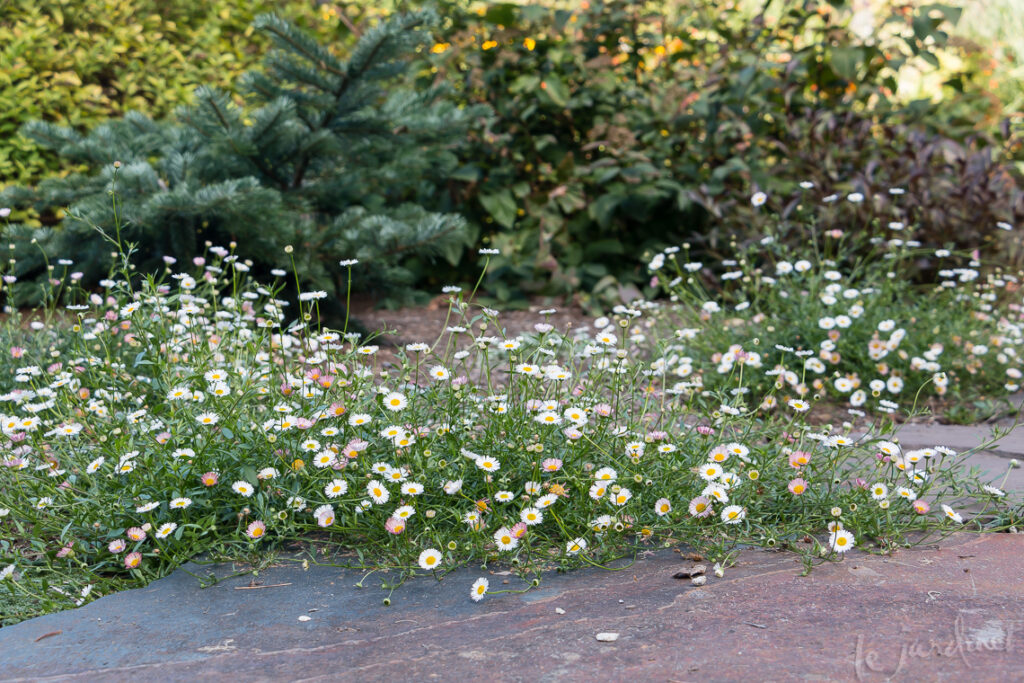
As new plants are introduced into the marketplace we often lose sight of some of yesterdays reliable performers. That is due in no small part to the declining number of retail and wholesale nurseries nationwide and the pressure on available display space in those that remain.
Just like you, I enjoy experimenting with new varieties but I make sure to leave room for two of my favorite daisies that have proven drought tolerant, low maintenance, deer-resistant and largely rabbit-resistant. Both are commonly referred to as fleabane and are two species of Erigeron, one being native to the United States and the other to Mexico.
What's in a name?
The common name fleabane is derived from the belief that they drive away fleas when burned or dried and stored in sachets, although there is little evidence to support this.
The genus Erigeron translates to "old man", referring to the fuzzy white seed heads.
Santa Barbara Daisy
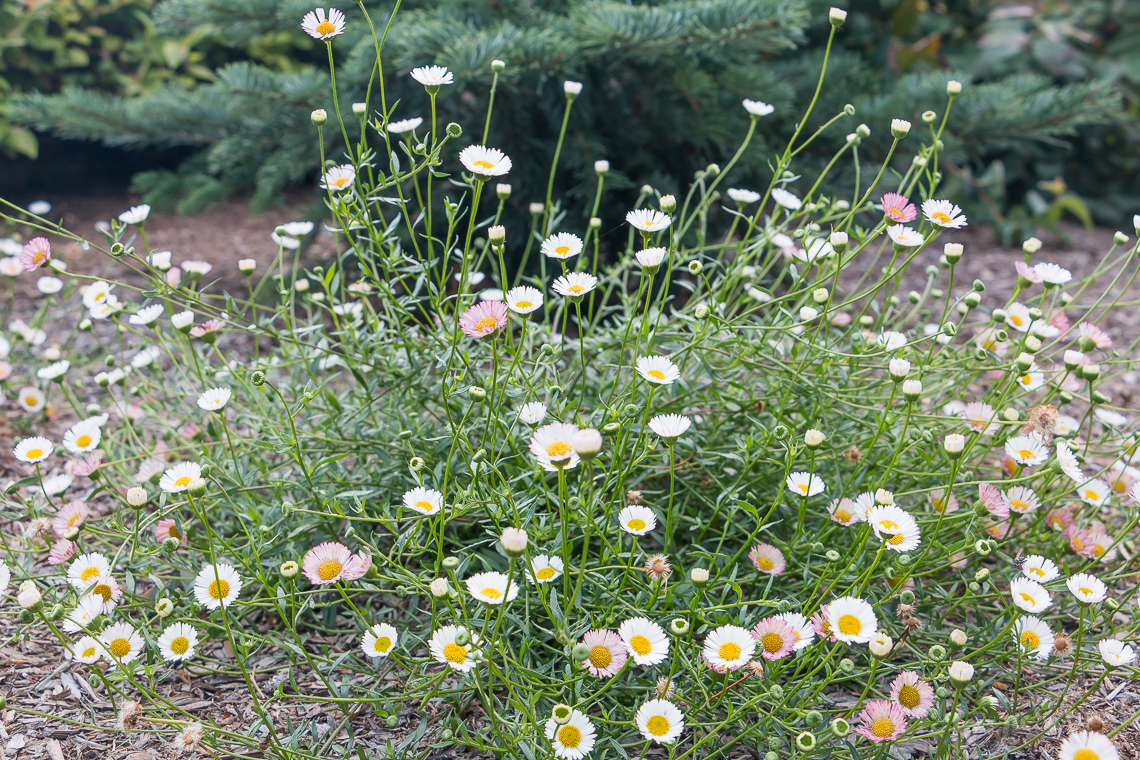
The diminutive Santa Barbara daisy creates a froth of delicate rose-tinged blooms at the front of a border in my garden
Reminiscent of the daisies found in the lawns of our childhood, Santa Barbara daisy, (Erigeron karvinskianus) is native to Mexico despite its misleading common name. The variety you are most likely to find is Profusion.
Why I like it
- Deer-resistant
- Drought tolerant
- Rabbit -resistant (although an initial spritz with a repellent in early spring may be needed)
- Evergreen in mild climates, or returns from the crown after colder winters
- Blooms all summer
- No deadheading needed
How to use it
Growing just 6-8" tall, this petite daisy is perfect for a weed-smothering carpet beneath taller shrubs and trees. Since the roots are fairly shallow its presence isn't detrimental to neighboring plants.
The gauzy froth of tiny daisies is the perfect counterpoint to hard surfaces such as stone steps and walls. It readily self-seeds in cracks and crevices to create a charming billowing haze of blooms. It is equally effective in between flagstones set within a patio or pathway where it will tolerate light foot traffic.
Consider allowing Santa Barbara daisy to mingle with gentle companions such as blue hardy geraniums. The photo above shows a backdrop of pale pink hydrangeas completing the vignette. Such an easy trio to copy.
Use the colors of the daisy to inspire you. I spotted this haze of pink and white daisies alongside an old tiled walkway while we were visiting a garden in South Africa. The juxtaposition of hard and soft together with the color echoes between plants and hardscape had me down on my hands and knees for a closer look.
One final idea I don't have a photograph for is to use it at the edge of container gardens in summer, perhaps instead of bacopa. Have you used it this way? I'd love you to share a photo with me!
How to grow it
USDA zones 5a-10a
Full sun or partial sun
Average soil
Low water once established
Grows 6-8" tall (but older plants may billow upwards to 12" with support) and spreads 2-3 feet wide
Evergreen in mild climates
Attracts bees and butterflies
Where to buy it
Try your independent garden centers first (they need our support). It may be stocked in the groundcover section or with sunny perennials. Remember that nurseries may not bring this in for a few more weeks, depending upon your climate.
Or order online e.g. Plant Delights or grow from seed.
Lynnhaven Carpet
My second pick is native to the United States, having first been found in Virginia. Robin's fleabane (Erigeron pulchellus var. pulchellus 'Lynnhaven Carpet') is less well known but equally garden worthy. I was given a single 4" pot as a sample almost ten years ago. It has since spread into a dense carpet of grey-green fleshy rosettes topped with pale lavender flowers every spring.
Why I like it
- Drought tolerant
- Deer-resistant
- Rabbit resistant
- Spreads slowly to create a dense carpet
- Evergreen in mild climates, semi-evergreen after harsh winters
- Easy to remove plants if they spread too far
- Blooms for several weeks in May (in my garden).
- Remaining foliage is a good groundcover
How to use it
In my zone 6b Duvall, WA garden this is thriving in full sun and moisture retentive soil but in hotter climates it may benefit from dappled shade during the afternoons. Beneath a deciduous tree seems ideal. Give it room to spread as I think it looks best en masse rather than repeating smaller clumps.
How to grow it
USDA zones 3-8
Full sun to partial shade
Average soil
Low water once established
Grows 12-15" tall and spreads by runners. (Plant them 2 feet apart for a quick carpet effect)
Evergreen (although mine got blackened by the recent ice storm, new foliage has already emerged and disguised the damage).
Deadheading isn't necessary but I usually shear the flowering stalks when seedheads form to tidy them up.
Where to buy
Please ask at your local nursery for this as several wholesalers do grow it! Remember that retail nurseries may not stock it quite yet – it will depend largely on your local climate. Otherwise try online: Growing Wild Nursery, Putnam Hill Nursery, Keeping it Green Nursery (great photo of foliage), Digging Dog Nursery
Subscribe to Receive Blog Posts
Gardening inspiration delivered right to your inbox from Le Jardinet

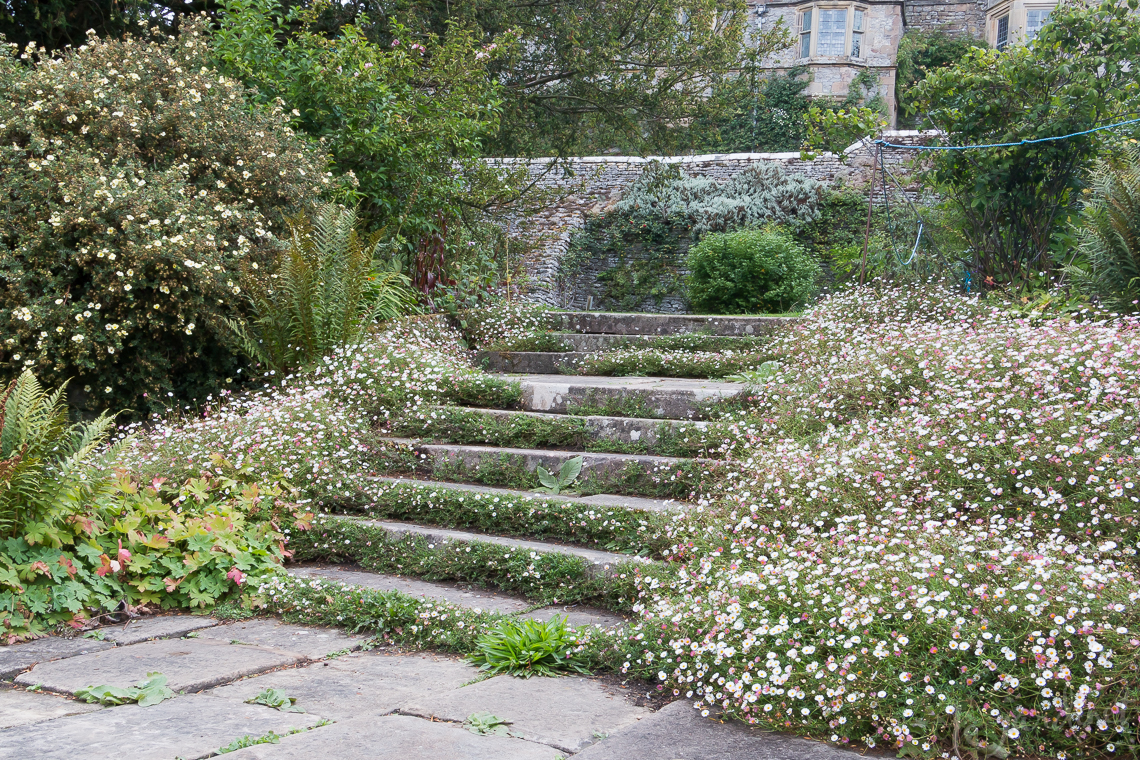
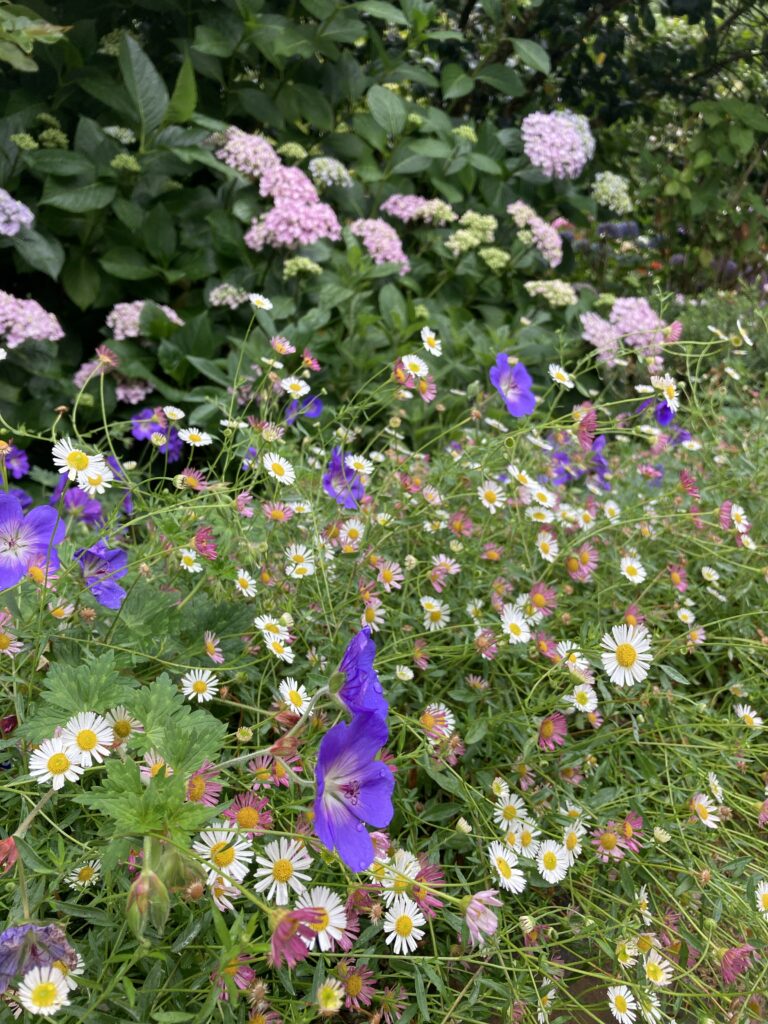
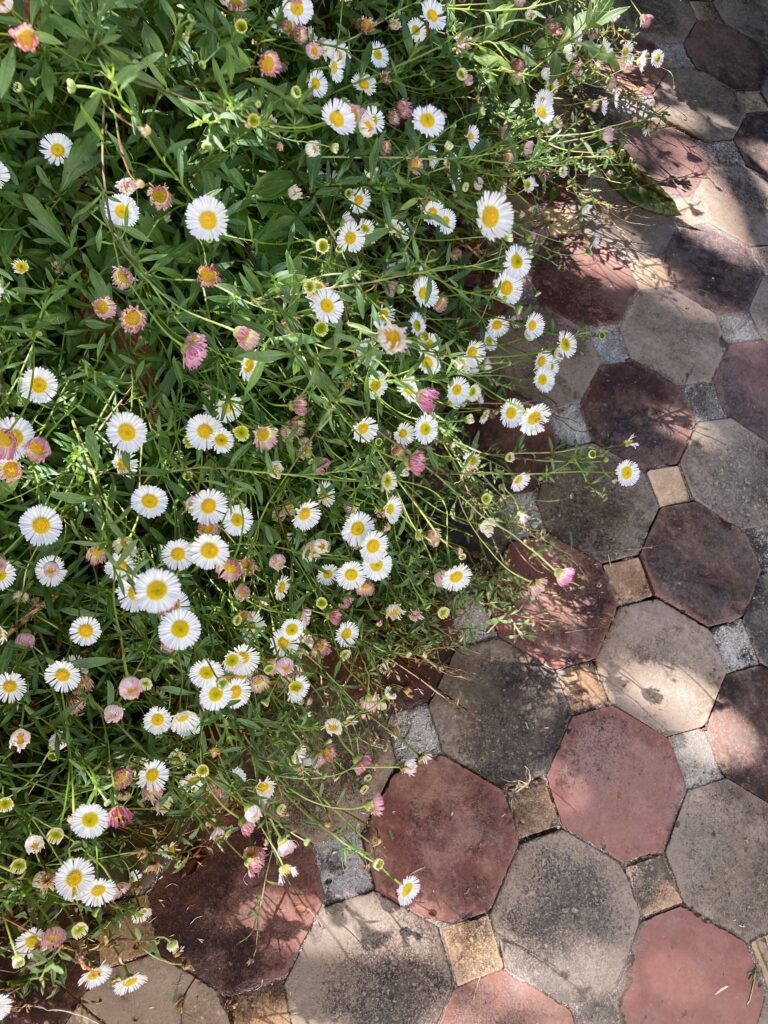
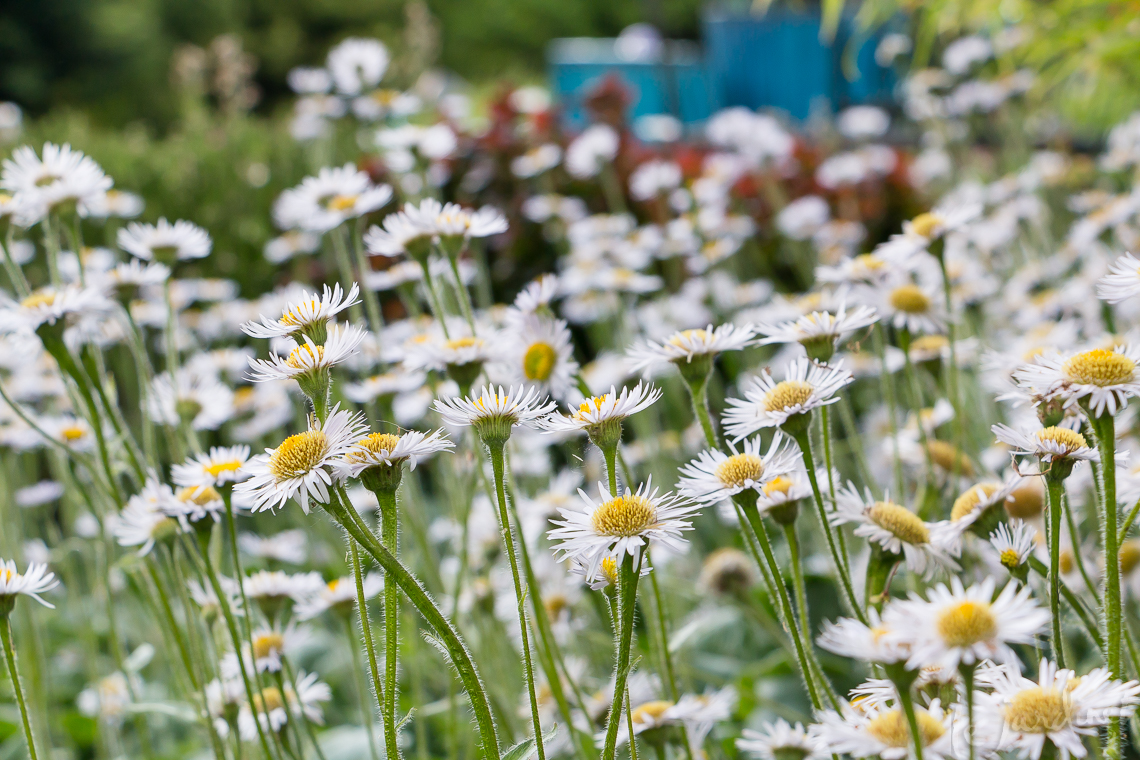
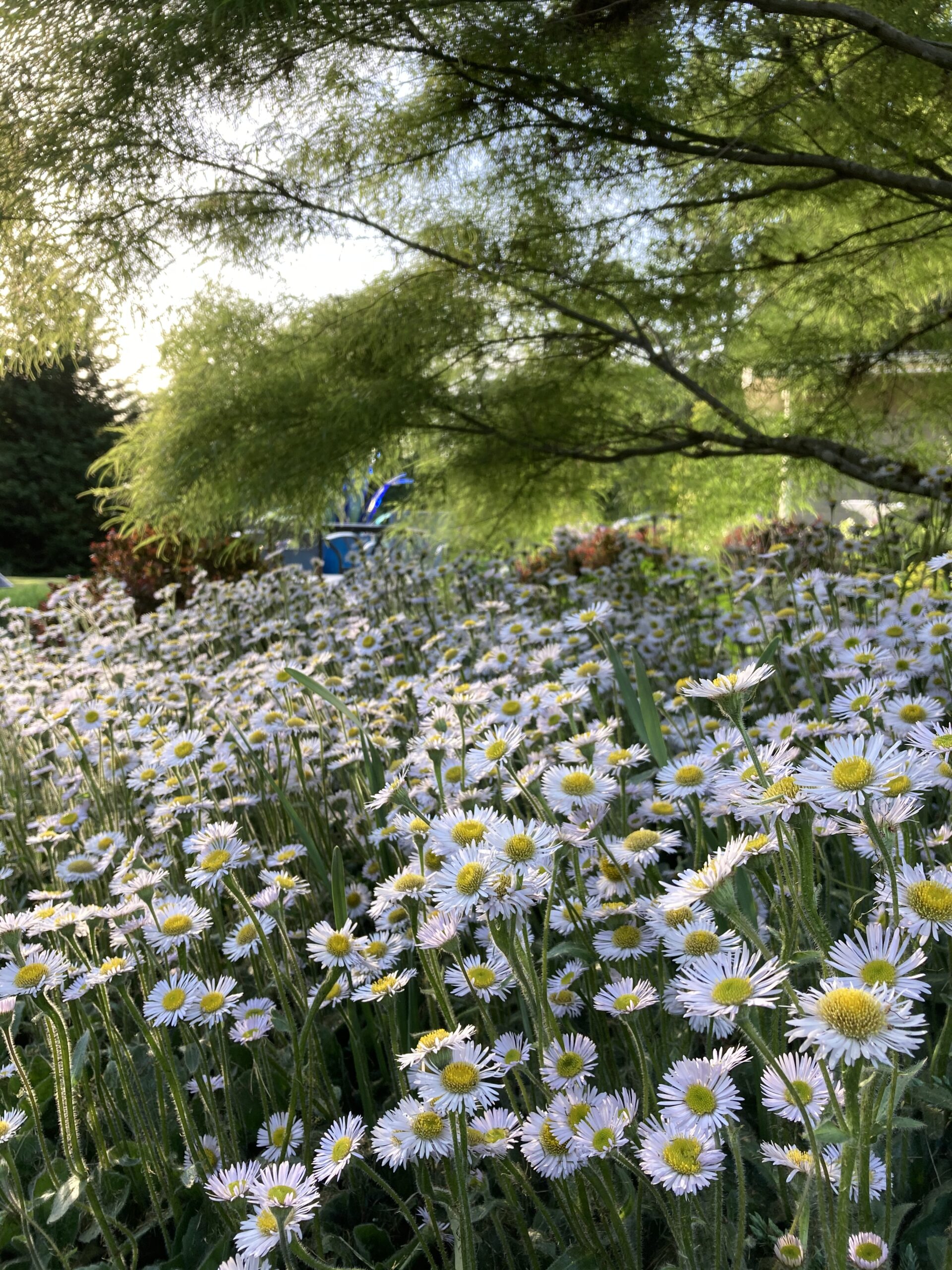
Really enjoyed and learned so much about your daisy "report". Your travels to these countries and your own personal experience were great.
Also always love the pictures relative to the plant, in the landscape, and inspiring combining all the different varieties of daisies is very helpful!
Thank you for sharing & valuable knowledge.
Lois Liere
Thanks so much for your lovely comment Lois – I'm really happy that you enjoyed this post and found it useful. I think design tips and firsthand experience are key to making the most of any plant in the garden.
Santa Barbara daisy had been a filler in my gardens for over 40 years. Here in zone 9, I have to cut it back 4 or 5 times in our hot climate and I’ve considered eliminating it because of that but it’s such a perfect plant… I keep it. Don’t think I’ve used it in pots though it loves to jump all around. Also love and use Verbena bonariensis.
Just found your site through the Garden Design ( was my favorite magazine!) newsletter. Been to England many times and love my garden tea break! My English gardening mentor friend, when she retired, hired a “Retirement Landscape Architect “ and had her garden brought down to scale for her. Great idea.
Your article on maintaining your garden was excellent. We lost our home and garden of 34 years to the Carr Wildfire in 2018. Thanks to wiping the slate clean…I now have a garden, in a newer home on the other side of town, I can manage with the help of a weekly mow and blow (lawns) guy. Lost 170 roses, now a much smaller number, what a difference. Same with household “stuff”, less so much easier to maintain. I, too, am a plantaholic but at 86, I’ve finally learned to resist! Somewhat!
Hi Carol, I'm so glad you found me through our mutual friend Garden Design. Like you I use Verbena bonariensis a lot – try Vanity for a shorter version that may work better for your new, smaller space. I'm so sorry to hear about the wildfire though – what a terrible experience.